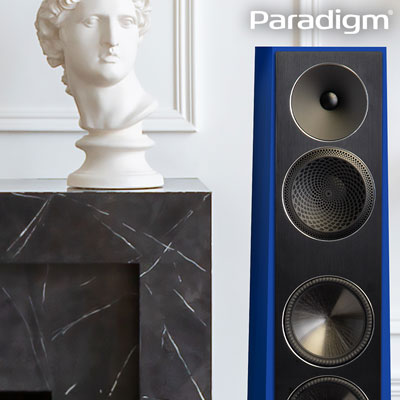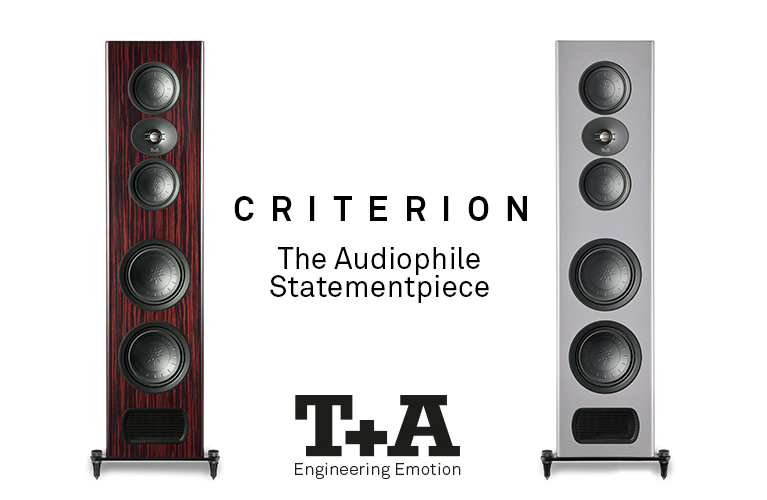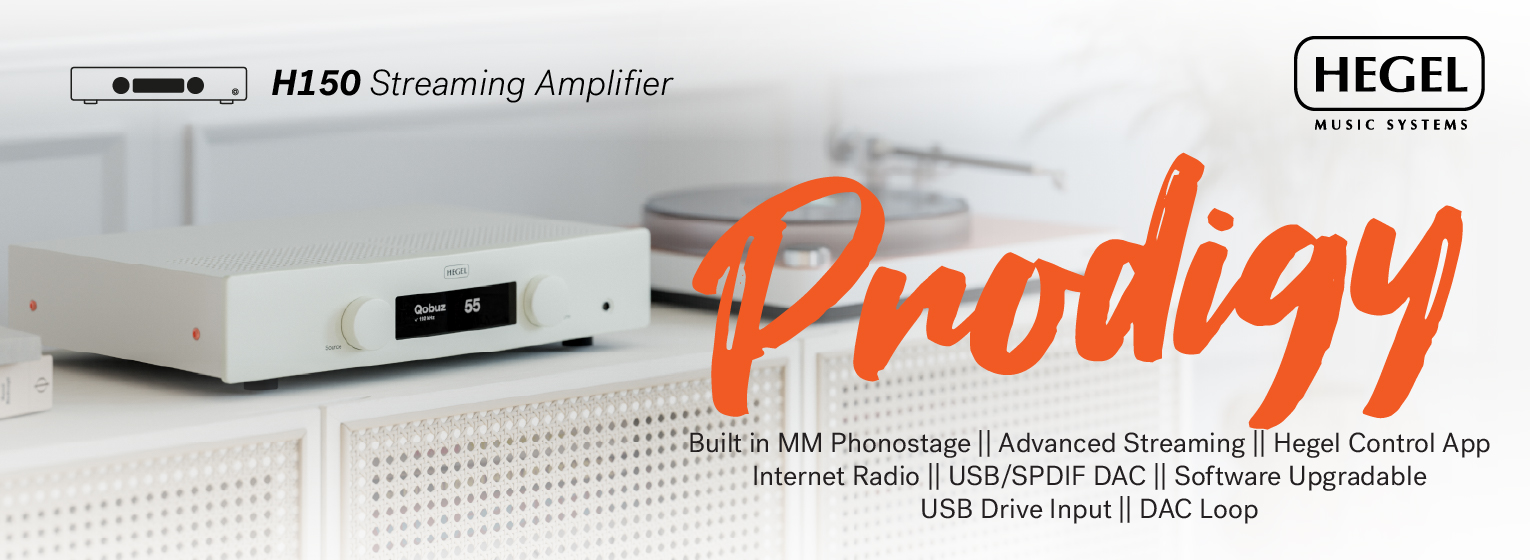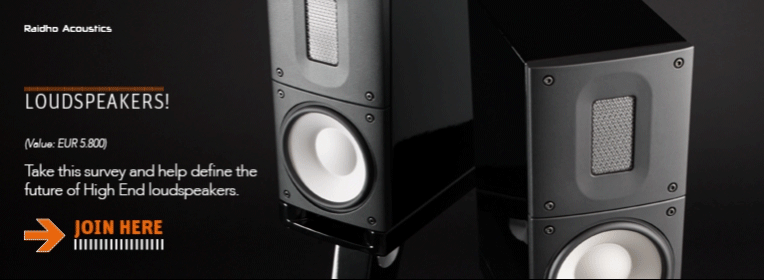In my August 1 editorial, titled “Inside Views: Why SoundStage! Goes the Distance,” I outlined why some of us at the SoundStage! Network travel to audio companies around the world as often as we do. My explanation was summed up in this sentence: “The reason is simple: so we can better inform our audience.” While visiting companies, we typically focus on their newest products. We also put time into finding out about each company’s history and what makes it tick.
In the time since that article was published, we visited Simaudio, which is located in Boucherville, Quebec, Canada, just outside Montreal. We were there in mid-September to learn about the Moon 371 streaming amplifier, which was officially released on September 30 and which I wrote about in this space last month. Simaudio’s factory is close to our home-base city of Ottawa, Ontario, Canada, about two hours away by car.
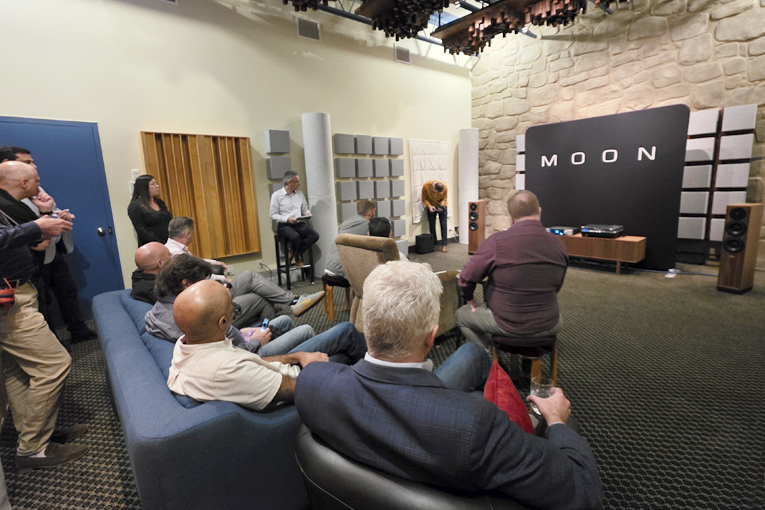 The Moon 371 product launch near Montreal
The Moon 371 product launch near Montreal
Following that, we traveled to visit three more companies—all of them for the first time—in two countries, both trips requiring air travel. These are the focus of this article.
At the end of September, I flew to Milan, Italy, along with two members of our video team—Chris Chitaroni and Jorden Guth. We first went to Diapason, which was founded in 1987, and then to Mastersound, which was founded in 1994.
Diapason
On September 29 and 30, we visited Diapason, which is located in Brescia, about a one-hour drive from Milan. Our main purpose was to listen to and get an early look at the company’s brand-new Didascalìa loudspeaker, which made its official debut on October 24, the first day of Audio Video Show 2025, held in Warsaw. The second reason was to learn about the company.
Before founding the company, Alessandro Schiavi, who still leads Diapason today, began his audio career by making recordings. This led to him custom-building loudspeakers that he could use for monitoring his recordings. Before long, he found that people wanted to buy those speakers. The first commercial Diapason speaker was the Prelude, an original pair of which Schiavi played for us. His goal had been to create speakers with point-source-type behavior that would disappear into a three-dimensional soundstage.
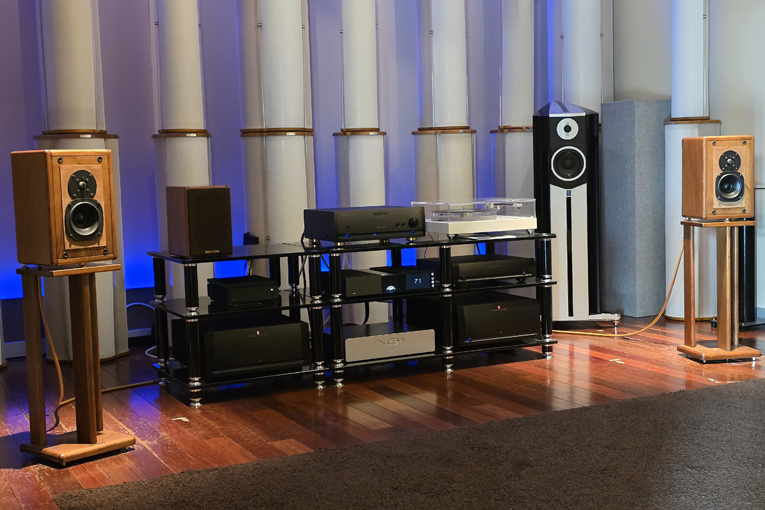 An original pair of Diapason Prelude loudspeakers
An original pair of Diapason Prelude loudspeakers
Quite quickly, Diapason became well known for crafting small standmounted speakers in the Italian fashion—that is, with lots of wood finished in such a way that you couldn’t imagine them coming from any other country. The Prelude had a rectilinear shape and rounded edges and corners, but subsequent models had multifaceted front baffles, which became something of a hallmark for the brand.
In 2014 came the Dynamis, a three-way floorstander that featured a multifaceted baffle but boasted a much larger cabinet than any Diapason before it, signaling a significant departure for the brand. Now there’s the Didascalìa, which is even more of a departure—for two reasons. First, though it adheres to the company’s principles, it’s the first Diapason not designed by Schiavi. Instead, it was designed by Paolo Tezzon, who previously worked for 18 years at Sonus Faber, almost 14 of them as R&D manager. Schiavi brought Tezzon into the company this year so that Tezzon could move Diapason forward with his own ideas and Schiavi could concentrate on the operations side of the business. Second, it doesn’t really look like a Diapason (nor does it look like a Sonus Faber), but it certainly does look Italian and will likely define the Diapason aesthetic for years to come.
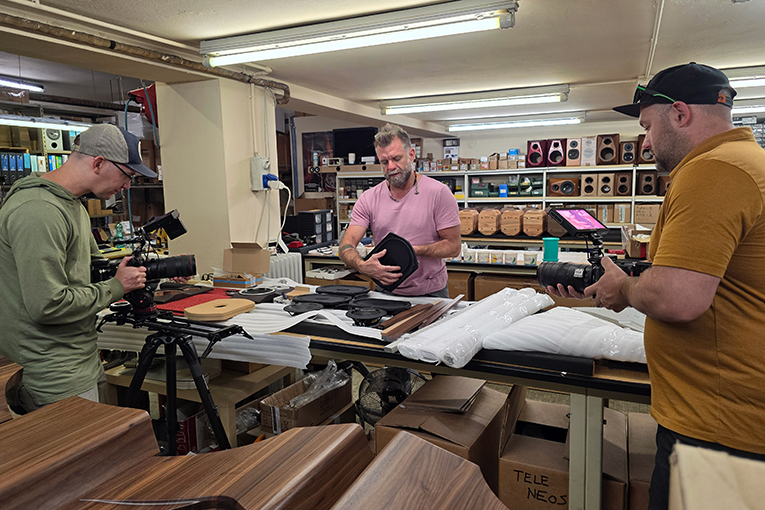 Videographers Jorden Guth (left) and Chris Chitaroni filming Paolo Tezzon and the Didascalìa parts
Videographers Jorden Guth (left) and Chris Chitaroni filming Paolo Tezzon and the Didascalìa parts
The Didascalìa carries on Diapason’s tradition of developing two-way speakers with point-source behavior, but it does so in a large floorstanding cabinet with a dramatic shape uncharacteristic of the brand. The cabinet has a large baffle area but tapers sharply to its rear—basically the opposite of earlier models. Like previous Diapasons, the cabinet is constructed mainly of wood. But unlike any prior models it incorporates aluminum and leather. The Didascalìa has a retail price of €59,000/pair, excluding VAT, which makes it one of the most expensive two-way speakers on the market—and the second-most-expensive Diapason model, with the Dynamis still having the highest price tag.
Tezzon told me his overriding goal was to bring out the best attributes of a two-way design—simplicity of design and coherence of the drivers, among others—and to overcome the limitations of such a design, particularly in terms of bass extension, which few two-ways do well. He claims that the Didascalìa can reach to below 40Hz in a typical room, which sounded about right based on my audition. To accomplish that, he utilized a large enclosure for the midrange-woofer and employed two side-firing passive radiators to augment bass output. He also wanted to retain the superior soundstage and image recreation that Diapason is known for, which he believes the Didascalìa’s two-way topology and stepped baffle helps to accomplish. On all the recordings I played, the Didascalìas cast wide, deep soundstages with precise aural images.
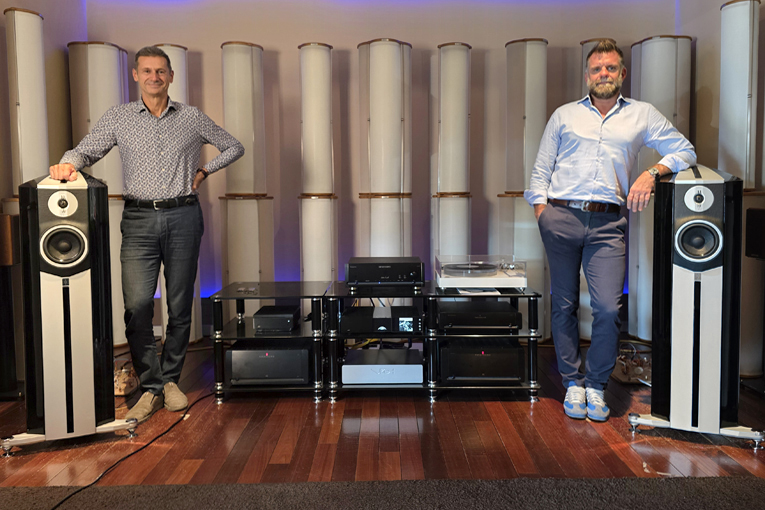 Alessandro Schiavi (left) and Paolo Tezzon presenting the Didascalìa
Alessandro Schiavi (left) and Paolo Tezzon presenting the Didascalìa
While there, we shot two videos: one about the Didascalìa and the other about Schiavi and his company’s history. The Didascalìa video is on our YouTube channel now; the other video will be appearing online in the coming months.
Mastersound
On October 1, we traveled to Mastersound in Vicenza, about 1.5 hours by car from Brescia. Again, we spent two days there. As with Diapason, we had a lot to learn, because the only things we knew beforehand were that they’re located in Vicenza—in fact, about 400 meters from Sonus Faber—and that all their components have tubes. We knew nothing of the company’s secret weapon: transformers designed and made by one of its founders, Luciano Sanavio.
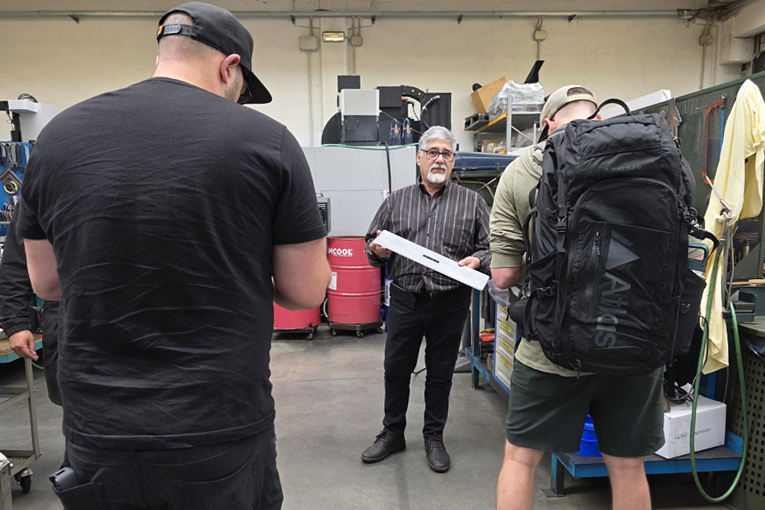 Luciano Sanavio showing a raw Mastersound faceplate
Luciano Sanavio showing a raw Mastersound faceplate
Luciano’s father, Cesare Sanavio, was an expert in transformer design. According to the company’s website, “in the 1950s, Cesare Sanavio graduated as an electronics technician with a thesis on output transformers in tube amplifiers.” As explained on the site, the elder Sanavio worked for an American company in the “then-booming radio and television industry,” which took him to South America, “where he also handled the design and installation of audio systems (then amplified by tubes) for churches and shops. It was during those years that his son Luciano gained his first experience and learned the art of building tube amplifiers.”
In 1994, Mastersound was born as a family collaboration with Cesare, Luciano, and Cesare’s other son, Lorenzo. After Cesare died, Luciano and Lorenzo continued with the company until Lorenzo retired in 2015. Later, two partners were brought on. The first was Antonio Ferro, in 2015, who is the CEO and also handles sales. The second was Nicola Janna, in 2017, who is not involved in daily operations but joined us in Vicenza. This newer trio still runs the company today.
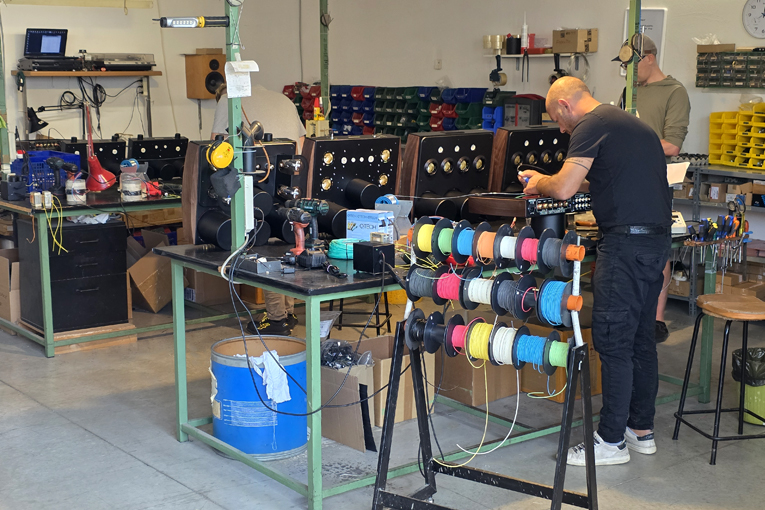 Mastersound assembly
Mastersound assembly
Luciano continues to be proud of his transformer designs, but he’s also secretive about them, explaining to us that output transformers account for 90% of the performance and resultant sound of a tube amplifier. For that reason, he makes the transformers himself, so the secrets can’t escape the company.
Currently, Mastersound makes preamplifiers, power amplifiers, integrated amplifiers, a phono amplifier, and a headphone amplifier. Other hallmarks of Mastersound component designs—though they’re not secret—include the use of tubes throughout, class-A circuit topologies, and, for the amplifiers, single-ended topologies and no feedback. I should also add that the casework is black-colored metal, but with wood accents done in a typical Italian fashion.
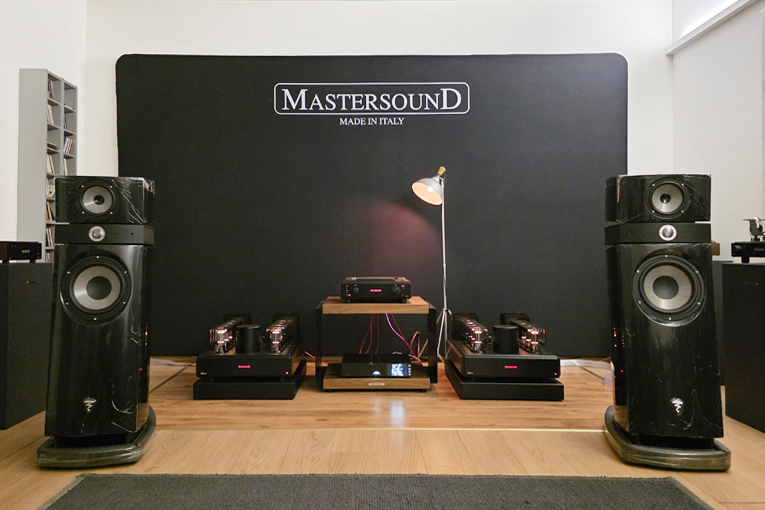 The Mastersound listening room
The Mastersound listening room
During our visit, we filmed two videos: one about the history of the Mastersound brand and the other about the company’s new flagship components—the PF 200 mono amplifier and Spazio preamplifier. These videos will also be on our YouTube channel shortly.
VinnieRossi
The day after we finished at Mastersound, we took an extra day to explore Venice, which is about an hour by car from Vicenza, then flew back to Canada. A week and a half later, we hopped on a plane for a short flight to Boston Logan International Airport to visit the VinnieRossi company, which is located in the heart of Worcester, Massachusetts, an hour away from the airport by car.
VinnieRossi is an American brand, but with Italian roots—founder Vinnie Rossi’s grandparents emigrated from Italy. Rossi grew up in New York State surrounded by Italian traditions, and he has a bit of an accent that speaks to that upbringing. In fact, Rossi can mimic lines from such movies as A Bronx Tale and Goodfellas quite well. Unlike the characters in those movies, Rossi studied electronics engineering and worked in high-tech laser optics before starting his first company, Red Wine Audio, in 2005. I’d always wondered where that name came from, but the mystery was solved while I was in Italy where I learned that his name sounds like the Italian phrase for red wines—vini rossi.
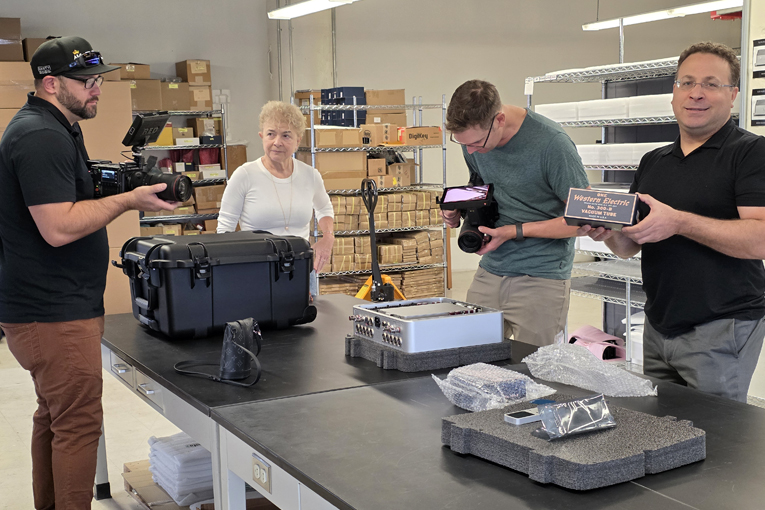 Vinnie Rossi (right) and the newest team member, Gabi Rynveld, during filming
Vinnie Rossi (right) and the newest team member, Gabi Rynveld, during filming
In 2015, he changed the brand name to Vinnie Rossi, mainly because he was so closely associated with the products. This year, the two names were butted up as VinnieRossi to create a single-word brand name that’s easier to market globally—doing so is one of the company’s focuses right now, with former Crystal Cable head honcho Gabi Rynveld recently hired to represent the company internationally.
Presently, VinnieRossi has three models, all under the Brama name—and all upscale in terms of design and price compared to previous products. The line is now in its second generation. It comprises an integrated amplifier and preamplifier priced in the US at $47,995 and $38,995, respectively, plus a mono amplifier at $59,995/pair.
When VinnieRossi first introduced the Brama series a few years ago, I noted the price increases and wondered if the Brama units could justify them. The reasons for the higher price of the integrated amplifier became apparent when we recently received a review sample; while photographing it, I noticed that the metalwork is of exceptional quality—in fact, among the best I’ve seen at any price. A review of the same integrated amplifier is now on SoundStage! Ultra. Jason Thorpe marveled at the quality of the casework too. But why the entire series is so expensive was fully revealed to me while visiting, where I could see inside each unit and talk to Rossi about the designs.
The Brama line’s industrial design was executed by Montrealer Olivier Raymond, who studied industrial design in Montreal as well as art and design in Switzerland—you can consider Brama something of an international effort. Inside, each product is extremely well finished—the metal is polished, the boards and parts line up perfectly, and the logo is etched onto the power-supply cover. It’s all very tidy looking, showing a degree of attention to detail that’s rare and costly. That level of fit and finish might not increase performance, but it certainly creates pride of ownership.
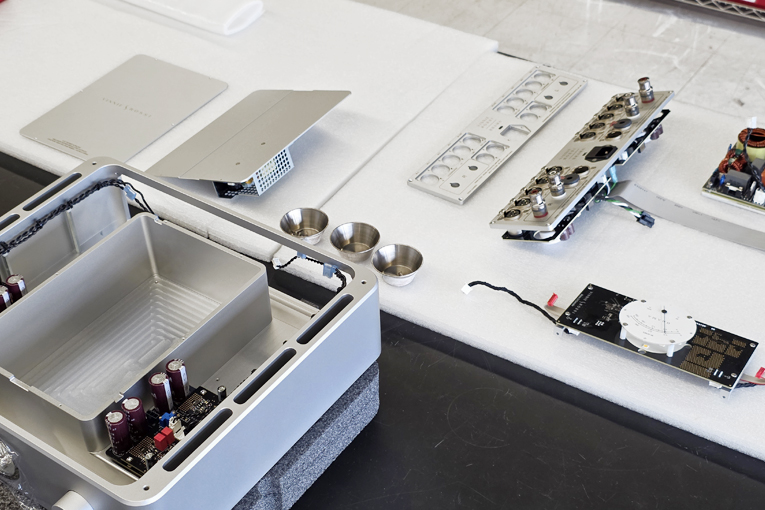 The pieces of a Brama integrated amplifier
The pieces of a Brama integrated amplifier
More important, a tremendous amount of thought and effort went into the Brama models’ technical design. Most notable is the switch-mode power-supply design that Rossi told me is similar throughout the three models. Some audiophiles believe companies use switch-mode supplies to cut costs. But the Brama models use a bespoke design that took over a year to develop. Rossi recruited a power-supply expert for the process. He says the final design wound up costing more than a linear power supply would have. But the Brama’s power supply outperforms a linear supply, mostly because it shifts noise from the power supply far out of the audioband.
Rossi favors using tubes for the line-stage section because they’re ideal for voltage gain. In both the preamplifier and integrated amplifier, he uses a Western Electric 300B tube in each channel—and each one of these costs a lot. Reassuringly, the tube is over-specified for the design. Each 300B is required to produce a minuscule amount of power compared to its actual capability, which is why each Brama comes with a lengthy ten-year warranty that includes the tubes. Should a tube need replacing, that’s easy to do.
The amplifier stage in both the integrated and mono amplifier is a class-AB design created by Rossi. The implementation is clever, because the covering case, which is what the components are attached to, is machined from a solid aluminum block—which is also extremely costly—without air gaps, except for where it joins the bottom plate. All that continuous metal makes an ideal heatsink for the integrated and mono amps’ power-amplifier sections, so no additional heatsinking is needed.
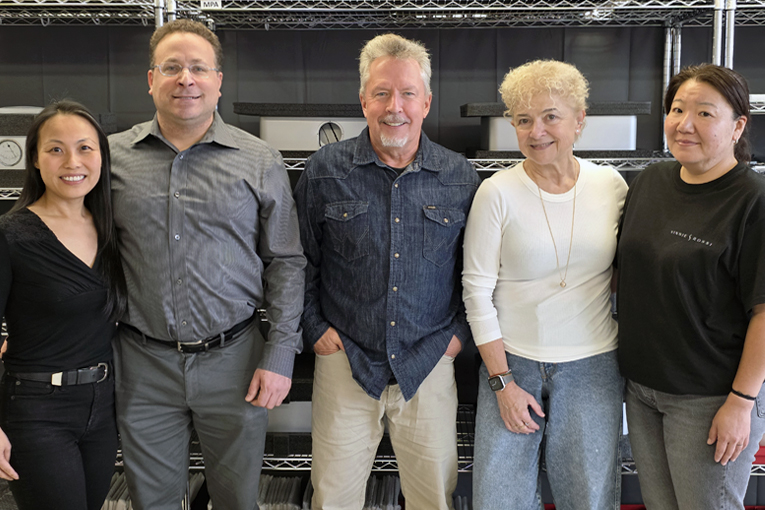 The author (center) with the VinnieRossi team
The author (center) with the VinnieRossi team
Finally, each Brama has a gauge on its front. Rossi wanted this because it gives each Brama a luxurious but also timeless aesthetic. Before visiting, I thought they must be sourcing gauges from a third party, but nope—we watched them assemble the gauges right there in Worcester. This truly is a product that’s made in the USA.
There’s more to Vinnie Rossi, VinnieRossi, and Brama, but you’ll find that information in our upcoming videos that focus on Brama and the brand.
In comune
As we wrapped up our visit to VinnieRossi, I realized that the three companies all have a few things in common beyond each having a link to Italy. One is that these are small, boutique-type companies. But their size shouldn’t fool you—they’re mighty in terms of product quality, attention to detail, and craftsmanship.
Another common thread is originality. Only a Diapason speaker is like a Diapason speaker, including the newest one, since none of them look like anything else on the market. Only a Mastersound component is like a Mastersound component, particularly when you consider the handmade, in-house-designed transformers, which you won’t find on any other product. And only a VinnieRossi component can be a VinnieRossi component when you consider the combination of aesthetics, build quality, and technologies in play.
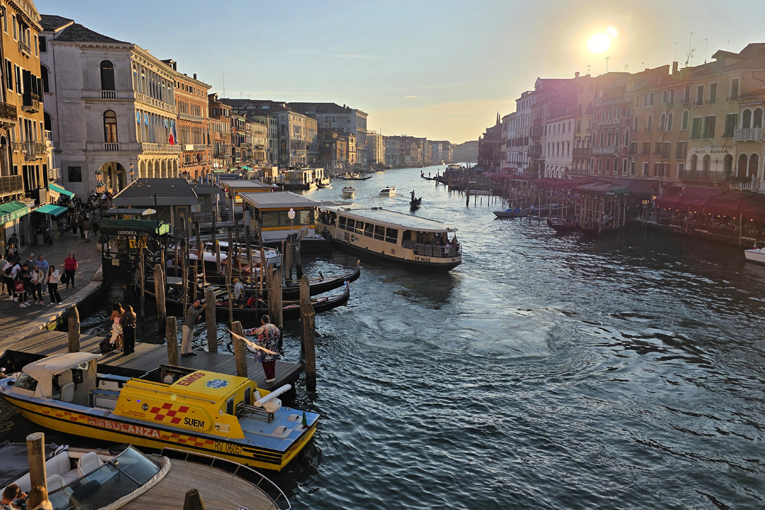 Venice, Italy
Venice, Italy
All these companies make products that are unique and of high quality. They’re also inspired by passion—something that has always set the country of Italy apart, and that still courses through Vinnie Rossi himself, even if his company is located in the United States. The Italian spirit of artistry, pride, and pursuit of beauty clearly transcends geography, evident in the way these products are made and in their broad international appeal.
. . . Doug Schneider
das@soundstage.com



